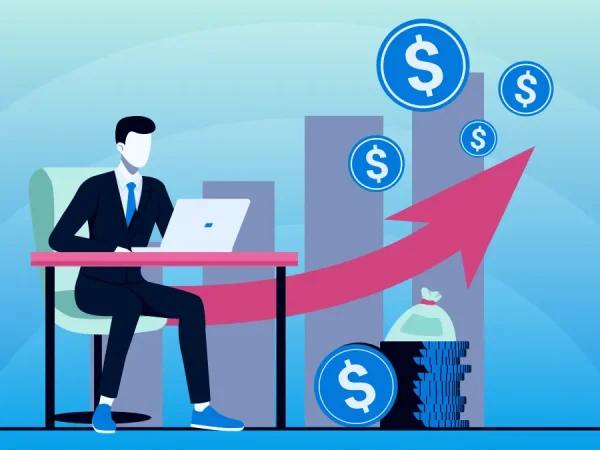The Power of Compounding: How Small Investments Can Lead to Big Returns

In the world of personal finance, there is a powerful concept that has the potential to transform small investments into substantial wealth: compounding. The idea behind compounding is simple yet profound—it allows your money to work for you and generate returns on both the initial investment and the accumulated earnings. In this article, we will explore the incredible power of compounding and how it can turn modest investments into significant financial gains.
Understanding Compounding
At its core, compounding is the process of earning returns on both the principal investment and the previously earned returns. This compounding effect has a remarkable ability to accelerate wealth growth over time. To better grasp its potential, let’s consider a hypothetical scenario:
Imagine you invest $1,000 in a diversified portfolio that generates an average annual return of 8%. In the first year, your investment would grow by $80, resulting in a total value of $1,080. Now, instead of withdrawing the returns, you choose to reinvest them. In the second year, your 8% return would be calculated not only on the initial $1,000 but also on the $80 earned in the first year. Consequently, your investment would grow by $86.40, bringing the total value to $1,166.40.
As the years go by, the compounding effect becomes more apparent. After ten years, your initial $1,000 investment would have grown to approximately $2,159, nearly doubling your money. If you continue this disciplined approach for several decades, the growth can be truly astonishing.
Harnessing the Power of Time
One crucial element in the success of compounding is time. The earlier you start investing, the longer your money has to grow, and the more significant the returns will be. Let’s explore two scenarios to illustrate this point:
Scenario A:
John starts investing $500 per month at the age of 25 and continues until he reaches 35. He stops contributing at that point but leaves his investments untouched until he retires at 65.
Scenario B:
Sarah doesn’t start investing until she turns 35. She decides to contribute $500 per month until she retires at 65.
Although Sarah invested for a more extended period, John’s investments have a significant advantage due to the power of compounding. Assuming an average annual return of 7%, John’s investments would grow to approximately $1.23 million by the time he retires. Sarah, on the other hand, would accumulate around $826,000. John’s early start gave him a substantial financial advantage, despite investing for only ten years.
This example highlights the importance of starting early and being consistent in your investment efforts. The longer your money has time to compound, the greater the potential for significant returns.
Benefits of Regular Contributions
Another aspect to consider is the benefit of regular contributions. By consistently adding funds to your investments, you increase the principal amount, which, in turn, leads to greater compounding. Regular contributions also help smooth out market fluctuations by utilizing dollar-cost averaging—a strategy where you purchase more shares when prices are low and fewer shares when prices are high.
Let’s examine the impact of regular contributions through a practical example:
Suppose you invest $1,000 initially and add $100 every month into a diversified investment account. Assuming an average annual return of 6%, after 30 years, your investment would grow to approximately $132,000. However, if you omit the regular contributions and only rely on the initial $1,000, the total value after 30 years would be around $54,000. The power of regular contributions combined with compounding significantly enhances the growth potential of your investments.
Conclusion
Compounding is a financial concept that holds tremendous power when it comes to growing wealth. By reinvesting both the initial investment and the accumulated returns, individuals can experience exponential growth over time. The key to harnessing the power of compounding lies in starting early, being consistent, and giving investments ample time to grow.
The examples provided demonstrate that even small investments, when given enough time and with the addition of regular contributions, can lead to substantial returns. By starting early and remaining disciplined, individuals can build a solid foundation for their financial future.
FAQs
1. Can compounding work against me?
Compounding, by itself, is neither good nor bad. It is simply a mathematical concept that describes the growth of an investment over time. Whether it works for or against you depends on various factors, such as the rate of return, the length of time, and the consistency of your investments. While compounding can generate significant returns when investments perform well, it can also magnify losses when investments decline in value. It’s crucial to assess your risk tolerance and make informed investment decisions accordingly.
2. How can I maximize the power of compounding?
To maximize the power of compounding, there are a few key steps you can take:
a) Start early:
The earlier you begin investing, the more time your investments have to grow and compound.
b) Be consistent:
Make regular contributions to your investments to increase the principal amount and take advantage of dollar-cost averaging.
c) Reinvest earnings:
Instead of withdrawing your investment returns, reinvest them to compound your growth.
d) Diversify your portfolio:
Spreading your investments across different asset classes can help manage risk and potentially increase returns.
e) Stay focused on the long term:
Compounding is most effective over extended periods, so avoid making impulsive decisions based on short-term market fluctuations.
By following these principles and maintaining a disciplined approach to investing, you can harness the full potential of compounding and set yourself on the path to financial success.
Read More: The Art of Budgeting: How to Take Control of Your Finances











